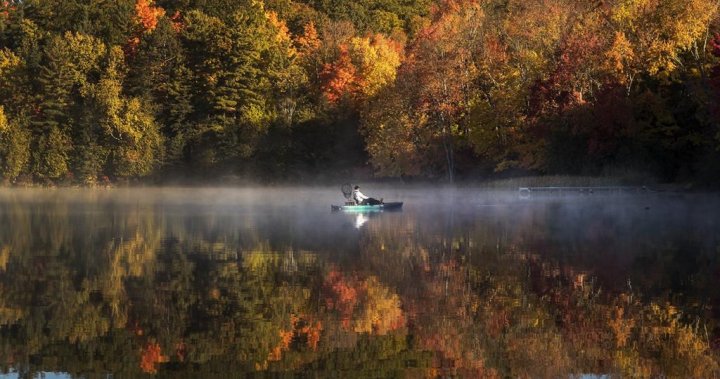The province of Ontario may not experience the usual vibrant fall foliage this year due to higher than normal temperatures in September. Experts attribute the duller colors to the warm and sunny weather patterns, which are not conducive to the physiological process that triggers trees to change their colors. While temperatures have dropped recently, it may be too late for the trees to develop vibrant colors. Factors such as daylength, tree species, and weather conditions play a crucial role in determining the color of autumn leaves.
Ontario typically experiences vibrant yellow, orange, and red foliage in the fall due to the right combination of these three factors. The province’s longer and colder fall season, along with enough daylight, contributes to the stunning fall colors. Ontario is home to various woody plants, including maple trees, which produce beautiful golden and red pigments. Weather is the only variable that changes from year to year and has a significant impact on the type of foliage that people can expect each fall.
Three chemicals play a vital role in the production of pigments in a leaf. Chlorophyll is responsible for the green color during the growing season, while carotenoids give leaves a yellow hue. Anthocyanins are formed when sugar concentration increases in the leaf and are responsible for red, orange, and golden pigments. Forest ecology professor Sean Thomas explains that close to freezing temperatures combined with bright sunlight are essential for brighter foliage, which has been lacking in the Greater Toronto Area but is more vibrant in colder areas north of the city.
Experts warn that climate change, with its steadily rising temperatures, warmer fall seasons, and increased precipitation and cloud cover, may lead to duller and less colorful falls in the long run. The higher precipitation inputs observed this year are not favorable for vibrant fall colors. However, there is still a chance for Ontarians to see some tree colors before the arrival of snow, although the colors may not last as long as in previous years. Thomas points out that while weather conditions were not ideal in September, cold snaps in the past week could bring about beautiful foliage before the end of fall.
In conclusion, Ontario may not experience the usual vibrant fall foliage this year due to warmer temperatures and lack of frost, which are essential for brighter colors. Experts emphasize that climate change is causing a steady rise in temperatures and more precipitation, which may lead to duller falls in the long term. Despite this, there is still hope to see some tree colors before winter arrives, especially with the recent cold snaps. While the weather has not been ideal for vibrant fall colors this year, Ontarians may still get to enjoy some beautiful foliage before the season ends.


